Eastern Red Cedar Lumber
- July 31, 2023
- 0 comment
Eastern Red Cedar, scientifically known as Juniperus virginiana, is a remarkable coniferous tree admired for its captivating aromatic scent and stunning reddish-brown wood. This species has become a favored option among woodworkers for a myriad of projects owing to its exceptional properties and long-lasting nature.
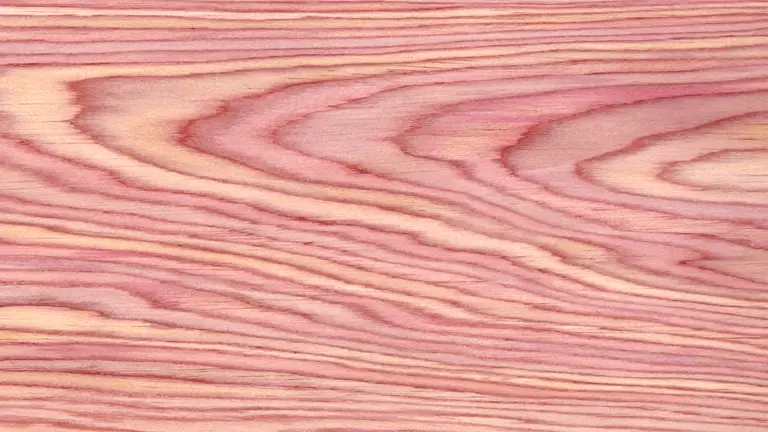
The heartwood of Eastern Red Cedar displays an attractive reddish-brown hue, which, combined with its pale yellow sapwood, creates a visually appealing contrast. Notably, the wood may contain occasional knots and intriguing streaks of darker reddish-brown, enhancing its charm and character in finished pieces.
Besides its aesthetic allure, Eastern Red Cedar possesses remarkable characteristics that contribute to its widespread use in both indoor and outdoor applications. Its innate resistance to decay and insect attacks makes it an ideal choice for constructing durable outdoor structures such as fences, decking, and garden furniture. Moreover, its distinctive fragrance, resulting from the presence of aromatic oils, adds a touch of luxury when utilized for indoor projects like closets, chests, and paneling.
| Common Name(s) | Eastern Red Cedar, Red Cedar, Aromatic Cedar |
|---|---|
| Scientific Name | Juniperus virginiana |
| Distribution | Eastern North America, primarily found in the United States |
| Tree Size | Typically 40-50 feet (12-15 meters) tall, with a trunk diameter of 1-2 feet (0.3-0.6 meters) |
| Average Dried Weight | 33 lbs/ft3 (530 kg/m3) |
| Specific Gravity | 0.53-0.64 |
| Janka Hardness | 900 lbf (4,000 N) |
| Modulus of Rupture | 11,940 lbf/in2 (82.4 MPa) |
| Elastic Modulus | 1,480,000 lbf/in2 (10.21 GPa) |
| Crushing Strength | 6,380 lbf/in2 (43.9 MPa) |
| Shrinkage | Radial: 3.3%, Tangential: 5.8%, Volumetric: 9.8%, and T/R Ratio: 1.8 |
Characteristics
Color/Appearance
The color of Eastern Red Cedar’s heartwood ranges from a warm reddish-brown to a deep red hue, exuding a rich and inviting appearance. In contrast, the sapwood takes on a pale yellow tone, creating an appealing color contrast in finished projects. One of the distinctive features of this wood is the presence of small knots and streaks of darker reddish-brown scattered throughout the grain, adding character and enhancing its visual appeal.
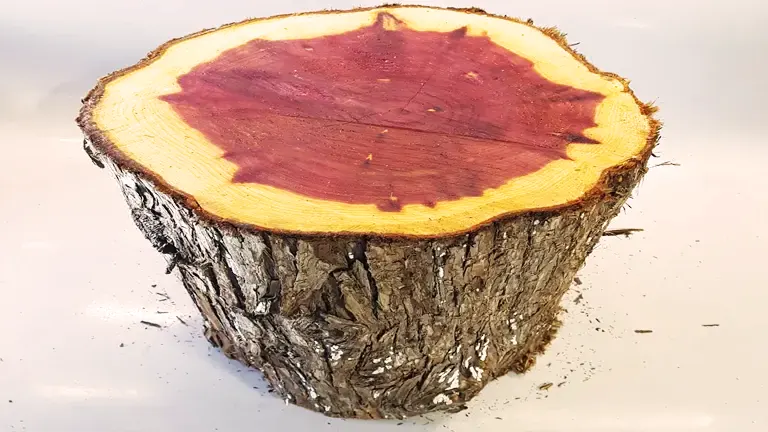
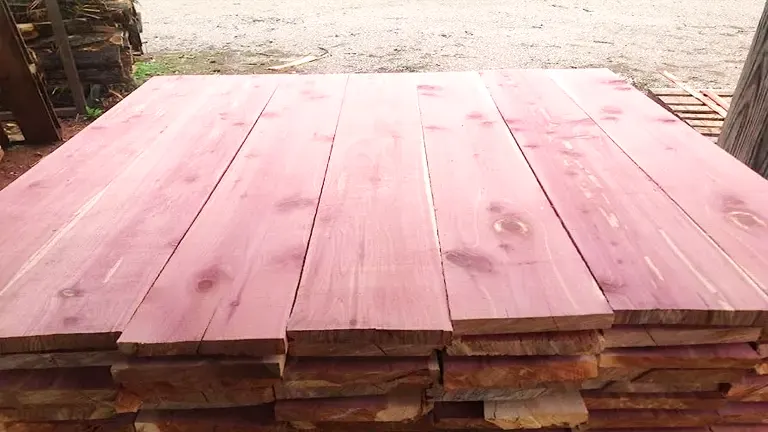
Grain/Texture
Eastern Red Cedar typically displays a fine to medium texture that contributes to its smooth and even surface. The wood’s straight grain pattern is the most common, lending itself well to traditional woodworking techniques. However, woodworkers may encounter occasional knots and captivating wavy or interlocked grain patterns, which can make each piece unique and eye-catching.
Rot Resistance
Eastern Red Cedar boasts exceptional natural resistance to decay and insect attacks, making it an outstanding choice for outdoor applications that are exposed to the elements. This inherent property allows the wood to endure and maintain its structural integrity even in challenging environmental conditions, such as fence posts, outdoor furniture, and other exterior structures.
Workability
Eastern Red Cedar is notably easy to work with both hand and machine tools. It has excellent machining properties, allowing for smooth cuts and shaping. The wood responds well to gluing, staining, and finishing, resulting in finely crafted and polished surfaces. However, woodworkers should exercise caution with cutting tools, as the high aromatic oil content in the wood can lead to tool clogging during prolonged use.
Odor
One of the most prized attributes of Eastern Red Cedar is its delightful and distinct aromatic scent. The wood emits a pleasant fragrance due to the presence of aromatic oils, making it highly valued for use in closets, storage chests, and other enclosed spaces to naturally repel moths and insects.
Allergies/Toxicity
While Eastern Red Cedar sawdust may cause respiratory irritation in some individuals, the wood itself is generally considered non-toxic and safe to handle. It is advisable to take proper safety precautions, such as using a mask and ensuring good ventilation, when working with any wood to minimize potential respiratory issues.
Pricing/Availability
Eastern Red Cedar lumber is typically moderately priced and widely available, especially in its native regions of Eastern North America. It is commonly found at specialty lumber suppliers, making it accessible to both professional woodworkers and hobbyists.
Sustainability
The sustainability of Eastern Red Cedar varies depending on the specific source and harvesting practices. While some populations are well managed and sustainably harvested, others might face environmental challenges due to over-harvesting and habitat loss. It is essential to consider the origin of the wood and support responsible sourcing to promote sustainable forestry practices.
Common Uses
Eastern Red Cedar finds versatile applications in both indoor and outdoor projects. Its natural rot resistance makes it a popular choice for outdoor structures like decking, fences, and garden furniture. The aromatic scent and attractive appearance make it ideal for interior projects such as closets, chests, and paneling. Woodworkers often use Eastern Red Cedar for crafting small specialty items and intricate carvings, taking advantage of its workability and unique grain patterns.
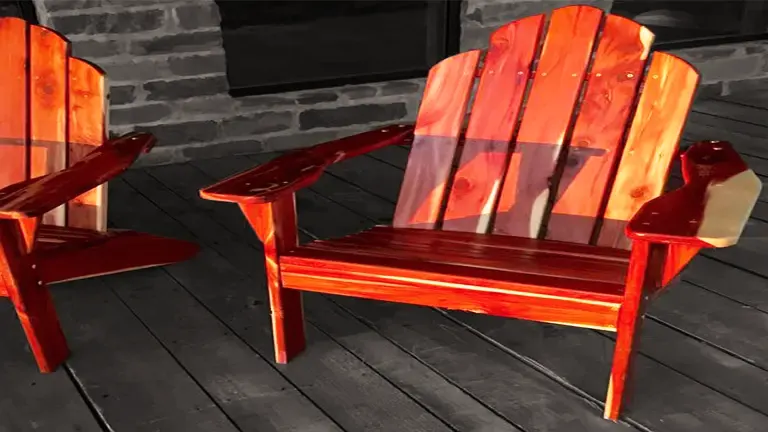
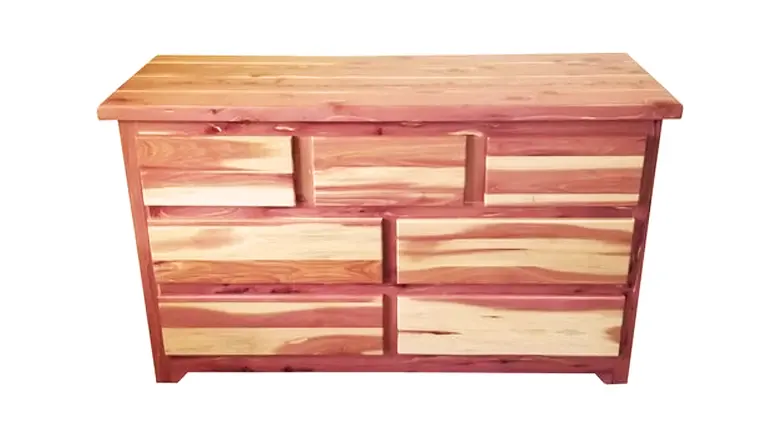
Frequently Asked Questions
- Is Eastern Red Cedar suitable for outdoor projects?
Yes, Eastern Red Cedar’s natural rot resistance makes it well-suited for outdoor applications like decking, fences, and outdoor furniture. - Can Eastern Red Cedar be used for woodworking indoors?
Absolutely, it is commonly used for making closets, chests, paneling, and other indoor items. - Is Eastern Red Cedar safe to work with?
While the wood itself is not toxic, the sawdust may cause respiratory irritation for some people. Proper safety measures, such as using a mask and good ventilation, should be employed when working with any wood. - Where is Eastern Red Cedar commonly found?
Eastern Red Cedar is primarily found in the eastern region of North America, especially in the United States. - What makes Eastern Red Cedar popular for closets and storage chests?
Its aromatic scent helps repel moths and insects, making it a desirable choice for protecting clothing and other stored items.
We’d love to hear from you! Share your personal experiences and thoughts about Eastern Red Cedar Lumber in the comments section below. Your insights could be a great resource for others looking to make well-informed decisions!


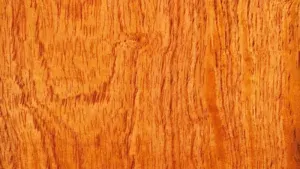

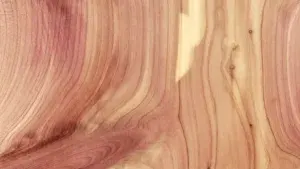



Leave your comment